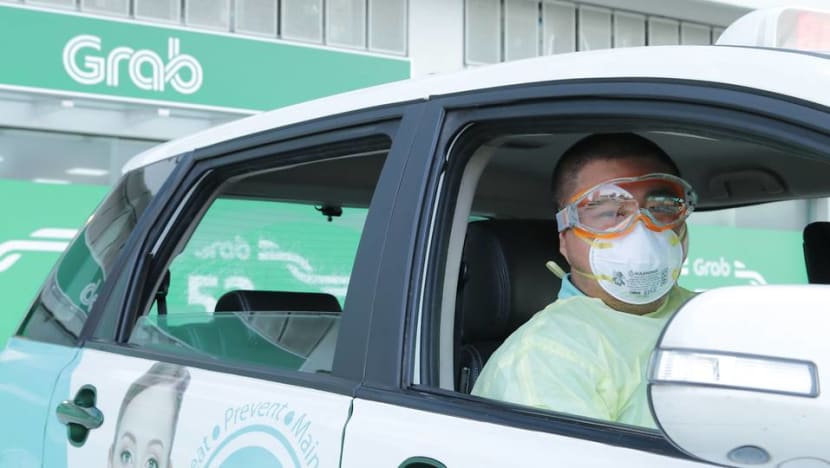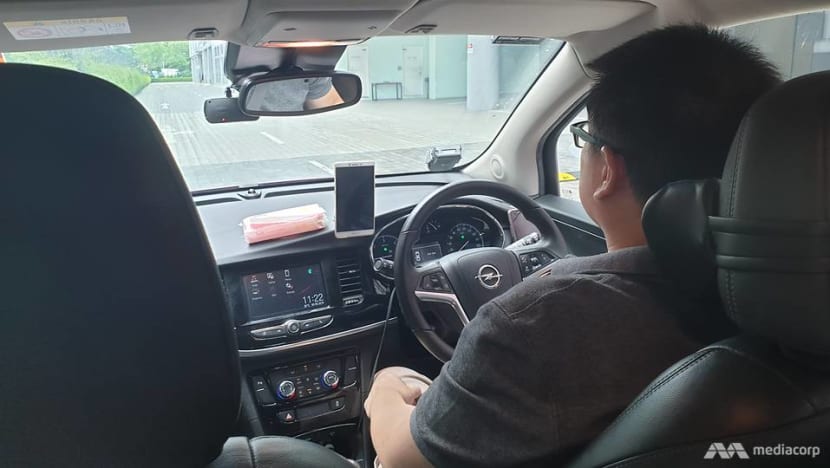commentary Commentary
Commentary: We got to know Grab for its transport business. That will soon change
Grab’s ambition to become a regional superapp has taken it in several new directions, many more attractive than the transport business, says NUS Business School’s Nitin Pangarkar.

File photo of a Grab car. (Photo: Facebook/Grab)
SINGAPORE: Recently, the Competition and Consumer Commission of Singapore (CCCS) lifted the measures it imposed on Grab in September 2018 over its merger with Uber. This is after the implementation of a new regulatory framework for point-to-point transport on Oct 30.
One concern for Grab’s customers and driver partners may be whether Grab will use its strong market position to alter the terms of engagement with them in the form of higher prices for consumers and lower income for its drivers.
While that remains a possibility as evidenced by the imposition of a 30-cents platform fee by Grab, I don’t expect Grab to aggressively implement price increases for consumers in the foreseeable future because of several reasons.
TRANSPORT SECTOR GETTING DIFFICULT
The transport landscape has changed over the last year because of the COVID-19 pandemic.
READ: Commentary: Singapore’s new headache of fewer public transport commuters
READ: Commentary: Grab’s new platform fee may have raised eyebrows but it is nothing out of the ordinary
Many people working from home leads to a reduced demand for transport. Peak-hour travel, which fetches the highest prices for transport companies such as Grab, is reduced as well, thereby discouraging providers from raising prices.
“In some countries, our transport GMV (gross merchandise value) is down by double-digit percentage,” Grab CEO Anthony Tan told media in April explaining the impact of the pandemic on the company’s transport business.
Market structure may also act as a brake for a fee hike. Though Grab has a large market share, further helped by an alliance with SMRT taxis in the form of integration of the Grab app, there is competition from several players—old and new.

TADA’s alliance with Premier Taxi has strengthened both players. Comfort has improved its app, though it took a while to do so, and it is an effective competitor in the street hailing segment.
Despite being well-funded, Gojek has not been able to steal a significant share of the market, but as long as it remains a viable player, together with Comfort and other players, it may be able to discourage Grab from charging much higher prices to consumers.
GRAB DRIVERS MAY FACE LESS INCENTIVES
I believe the lower demand for transport services, coupled with industry competition, would make it counterproductive for Grab to substantially raise the prices for consumers.
READ: Commentary: Does the ride-hailing industry have a sexual harassment problem?
Whether Grab will alter the terms for its drivers is more difficult to predict because a complex array of factors will influence the supply of drivers. On one hand, a weaker economy over the last 12 months may have led to an increase in supply, when those laid-off may turn to become private-hire drivers.
On the other hand, Grab has restructured the incentives for drivers, making driving for them less attractive as a livelihood. The decline in overall demand for transport due to people working from home also means fewer customers. Thus, some may not join the bandwagon.

There is the additional factor of a maturing sector which will often mean profitability considerations become more important for Grab, its key investors and players with similar business strategies.
READ: Commentary: Why is Alibaba planning to pour S$3 billion into Grab?
The initial incentives for building up an ecosystem through aggressive pursuit of market share may be diluted over time.
GRAB’S NEW LUNCH
Beyond the prospects of, and competition in, the transport sector, Grab’s ambition to become a regional superapp has taken it in several new directions, many more attractive than the transport business.
The pandemic has not only reduced the demand for transport but also increased the demand for food delivery.
READ: Commentary: The next tech crash is around the corner thanks to COVID-19
Grab Singapore's managing director Yee Wee Tang told CNA in June that its food delivery business has seen a 60 per cent increase in orders since November 2019 due in part to the surge of orders since COVID-19 hit.
The food delivery business was contributing a rapidly growing portion of Grab’s revenues even before COVID-19 hit. According to Grab, the GMV for its food business grew 900 per cent in June 2019 from a relatively low base to account for 20 per cent of Grab’s total GMV in September 2019, compared to less than 5 per cent in 2018.

The food delivery business’ nascent nature in several different countries across the region also means that the business has strong future growth prospects for the foreseeable future. Thanks to its acquisition of the Uber Eats business,
Grab already has a strong regional footprint in the business with several hundred thousand partners. Additionally, newer strategies such as cloud kitchens may further enhance the growth potential of the food delivery business.
Even in Singapore with its limited market size because of a small population, food delivery remains an attractive and growing market. Grab recently opened its second Grabkitchen in Singapore. It is also assisting hawkers affected by the pandemic in their digitalisation efforts.
GRAB’S NEW DIRECTIONS
The financial services business in general, and payments business in particular, is another attractive, though intensely competitive, avenue available to Grab for achieving growth.
READ: Commentary: Thanks to China's move on Ant, FinTech firms may look like banks soon
Underbanked populations and reliance on cash transactions in many countries around the region increase the attractiveness of this business, which is likely to be more profitable than the transport business and also less likely to attract any regulatory actions such as fines.
Grab is also trying to expand its Grabmart initiative which has shown rapid growth during the pandemic. This sector, again, has fewer regulations and Grab may be able to leverage its large user base to grow.

Grab is also moving into regional markets that are underpenetrated and hence have better growth prospects, and sometimes higher market potential as well because of larger populations.
It may mean less attention to the transport business, especially in Singapore where the growth prospects may be limited because of a small population and its high market share.
Already by last December, Lim Kell Jay, regional head of Grab’s food delivery service GrabFood, confirmed that the food and financial services accounts for more than 50 per cent of Grab’s total GMV.
READ: Commentary: Getting your food order delivered should be straightforward so why isn’t it?
READ: Commentary: Is trouble brewing in Grab paradise?
Therefore, I see Grab increasingly moving its attention, and possibly resources, away from its transport business in Singapore.
The company is also maturing and looking to support the members of its ecosystem such as helping merchants improve their digital skills.
I am optimistic that the key stakeholders - consumers and drivers - will not face significantly adverse terms of engagement from Grab. I do believe that the headwinds faced by the sector in the form of reduced demand may have a more significant effect on stakeholders such as driver partners.
Nitin Pangarkar is Associate Professor in the Department of Strategy and Policy at the National University of Singapore Business School. The opinions expressed are those of the writer and do not represent the views and opinions of NUS.















